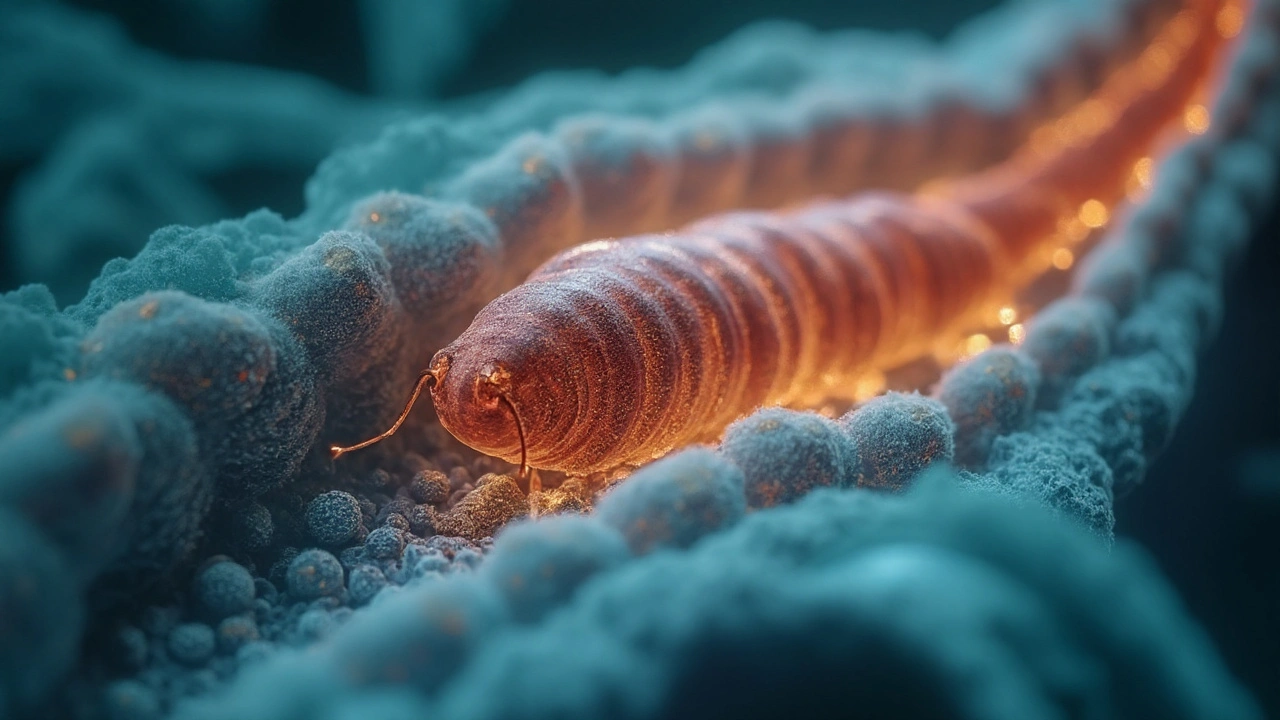Albendazole Pharmacokinetics Explained – How the Drug Is Processed in Your Body
Ever wonder what happens to albendazole after you swallow a tablet? Understanding its pharmacokinetics helps you know how fast it works, how long it stays active, and what could affect its performance. Below we break down the key steps – absorption, distribution, metabolism, and elimination – in plain language.
How Albendazole Moves Through the Body
When you take albendazole, it’s absorbed mainly in the small intestine. Food can slow the process a bit, but the drug still reaches the bloodstream within 2‑4 hours. Once in the blood, albendazole quickly binds to plasma proteins, especially albumin. This binding limits how much free drug is available to attack parasites, but it also protects the molecule from early breakdown.
The drug then spreads to tissues where parasites live – the liver, lungs, and intestines are common sites. Albendazole’s ability to cross cell membranes lets it reach even deep‑seated infections. Its distribution volume is relatively large, meaning it can leave the bloodstream and enter body fluids and tissues fairly easily.
What Affects Its Levels
Albendazole itself isn’t very active; it becomes potent after your liver changes it into albendazole sulfoxide. This metabolite is the real anti‑parasitic player and stays in the blood longer, usually for 8‑12 hours. Enzymes called cytochrome P450 (mainly CYP3A4) do the heavy lifting. Anything that speeds up or slows down these enzymes will change how much active drug you get.
For example, antacids, certain antibiotics, and grapefruit juice can raise albendazole levels by inhibiting CYP3A4. On the flip side, drugs like rifampicin can make the liver work faster, lowering the amount of active metabolite. That’s why doctors often adjust doses when you’re on other medications.
Age, liver health, and genetics also matter. People with liver disease may not convert albendazole efficiently, resulting in less albendazole sulfoxide and weaker treatment. Kids and the elderly sometimes need dose tweaks because their metabolism rates differ from typical adults.
Elimination happens mainly through the kidneys. Both albendazole and its metabolite are excreted in urine, with a small amount leaving in feces. The half‑life of the active metabolite is roughly 8‑12 hours, so a typical course of treatment lasts several days to keep steady drug levels.
To keep things safe, it’s a good idea to take albendazole on an empty stomach unless your doctor says otherwise. Staying hydrated helps your kidneys clear the drug efficiently. If you’re on other medicines, let your prescriber know – a simple check can prevent unexpected interactions.Bottom line: albendazole gets absorbed in the gut, rides the bloodstream bound to proteins, is turned into a stronger form by the liver, and leaves the body through urine. Food, other drugs, and liver health can all shift how much active drug you end up with. Understanding these steps can help you and your healthcare provider make smarter dosing choices and avoid side‑effects.
Albendazole Mechanism of Action Explained: How It Kills Parasites and Stays Safe for Humans
- Cheryl Moran
- September 5, 2025
- 8 Comments
Clear, practical explainer on how albendazole works: microtubule disruption, energy starvation, selectivity, resistance, food effects, and real-world tips for 2025.
read more